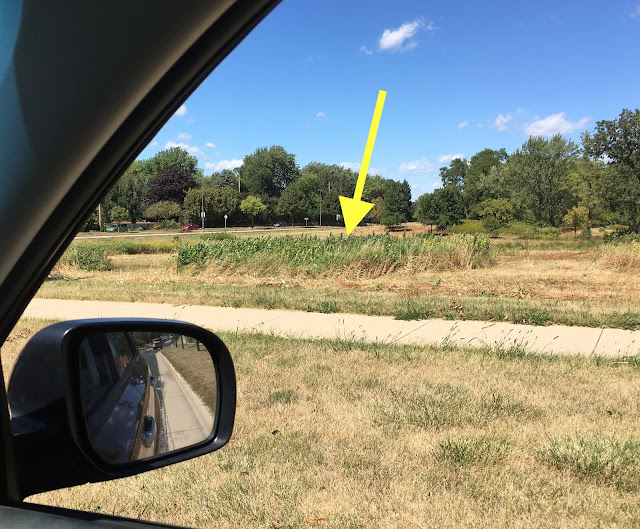Back in mid-September I noticed that a large field across the street from our local library had been mowed in a piebald pattern, with substantial remaining patches of tall grasses and weeds. As I turned the corner, I was delighted to see the field from another angle:
The patch I have highlighted with the yellow arrow is a large stand of milkweed. Whoever mowed this field did so with the express purpose of allow any remaining Monarch butterflies there to complete their pupation and head toward Mexico.
This week the patch is still intact and the milkweed is releasing its seed. I'm wondering now whether these remaining patches of grasses and weeds will remain up throughout the winter to serve as refuges for small mammals and other critters.


I am told that in the U.K. it is legally required that you mow (harvest/reap) a field from the centre out, thereby giving wildlife a chance to evacuate before the blades of doom stop their precious lives.
ReplyDeleteSeems like a good idea to embrace, for wildlife scraping a living in a monoculture field, wildlife etching a subsistence living in a urban landscape, or even homeless people being pushed outwards from gentrificating suburbs.
I'm not sure if gentrificating is a word, but hey, you know what I mean.
That is cool! Do you know who owns the property? I'd contact them to thank them and find out if this is part of some organized program.
ReplyDeleteIt belongs to the city, technically part of the school district but not used for such, and fallow for the past 20 years.
Deleteyou HAVE to clear mow every once in a while. otherwise, your meadow turns into bush and then forest.
ReplyDeleteI-)
Yes of course. But you don't have to clear mow an entire field at any time. You can mow a different third of it every three years and still keep the brush down.
Delete